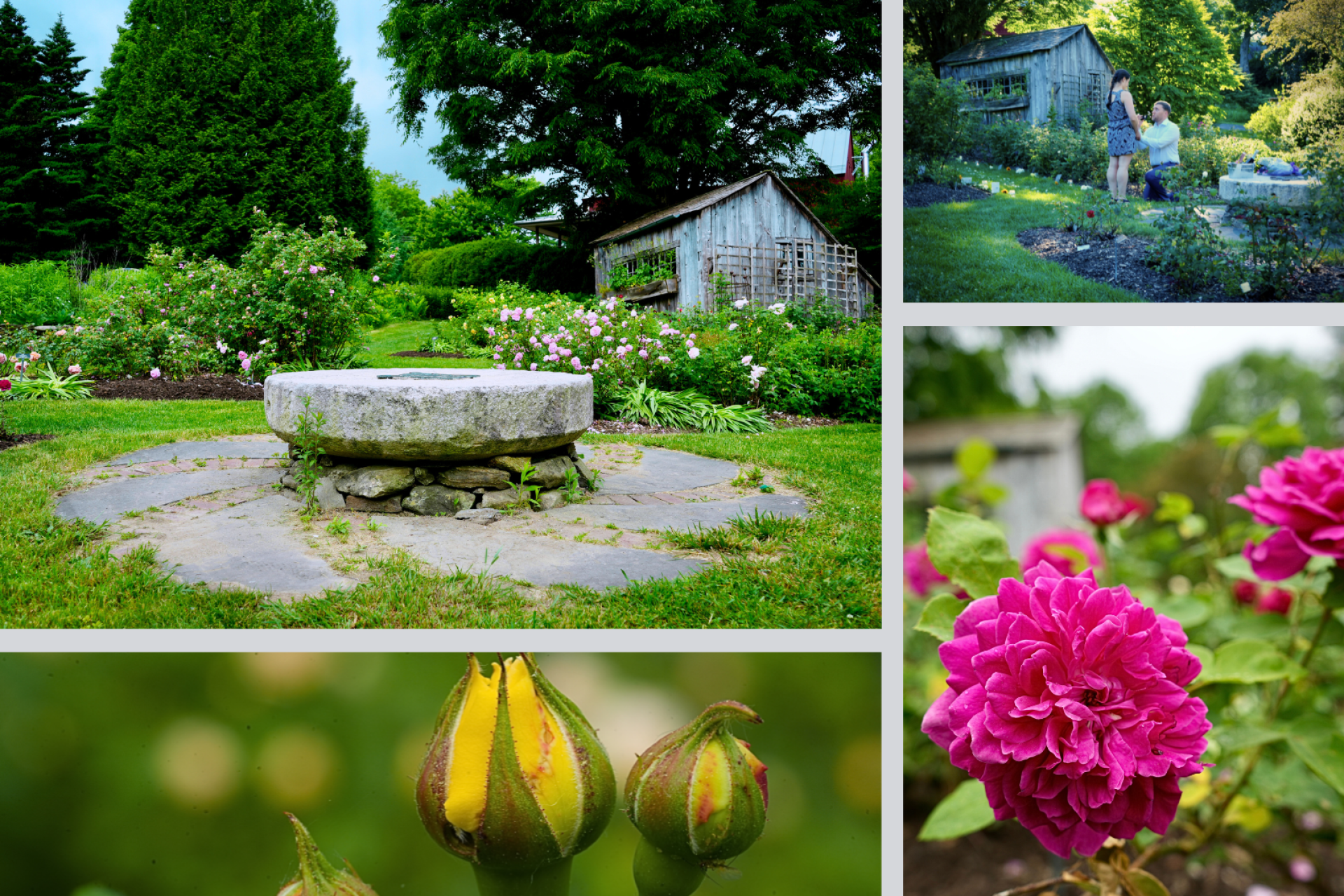You are here
Rose Garden
Rose Garden
Our rose garden contains hundreds of shrub roses in an informal setting anchored by a stone mill wheel. In collaboration with David Austin Roses, Berkshire Botanical Garden has trialed a beautiful assortment of new English roses known for their color, perfume and ability to repeat bloom even after their first spectacular show in June. Designed by Michael Marriott, 2011. Stonework by Mark Mendel.
People have raised roses for more than 5,000 years. But although there are many antique cultivars still grown, plant breeders continue developing new varieties that are hardier, more disease resistant, or drought tolerant than older roses, and that bloom longer. We created this garden to test how well many of these modern roses cope with the specific challenges of our region.
A Rose for Every Region
This garden combines old varieties with new. While designer Michael Marriott chose each variety for its beauty, fragrance, and disease resistance, part of this garden's objective is to test which varieties of David Austin Roses are truly hardy in our area.
The USDA Plant Hardiness Zone Map, the gold standard for gardeners and growers, determines which plants are likely to thrive in particular areas. It divides minimum winter temperatures (measured over the past 30 years) into 10-degree zones. It's an invaluable guide, but not a guarantee. Many other factors influence whether particular plants thrive in a particular site, including drainage, wind exposure, the amount of sunlight, and other considerations that influence the microclimate of the garden. The Berkshire Botanical Garden is located in USDA Zone 5b, where average minimum winter temperatures can drop to -15 degrees F.
Did You Know?
Poets throughout history have written odes to the beauty of roses. But cooks sing their praises as well. Rose hips — the fruit that develops when the rose flower is fertilized-are made into jams, jellies, liquors, and confections. They are rich in vitamin C and antioxidants, and these colorful fruits are prized by birds as well as people.
To find the hip, look below the flower. It's the thick, green "bulb" at the base of the petals. When the flower fades, the pollinated ovarv thickens and takes on its ripened color (typically red) as the seeds develop.
Among the Collection:
Help Our Garden Grow!
Your donation helps us to educate and inspire visitors of all ages on the art and science of gardening and the preservation of our environment.
All donations are 100 percent tax deductible.










































